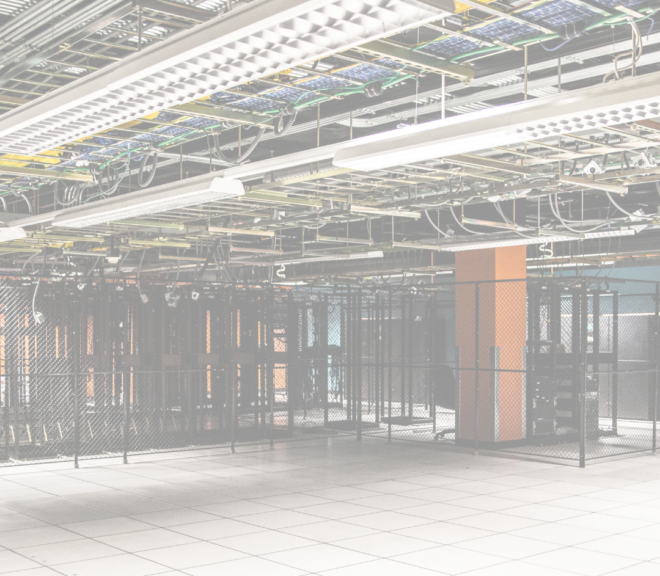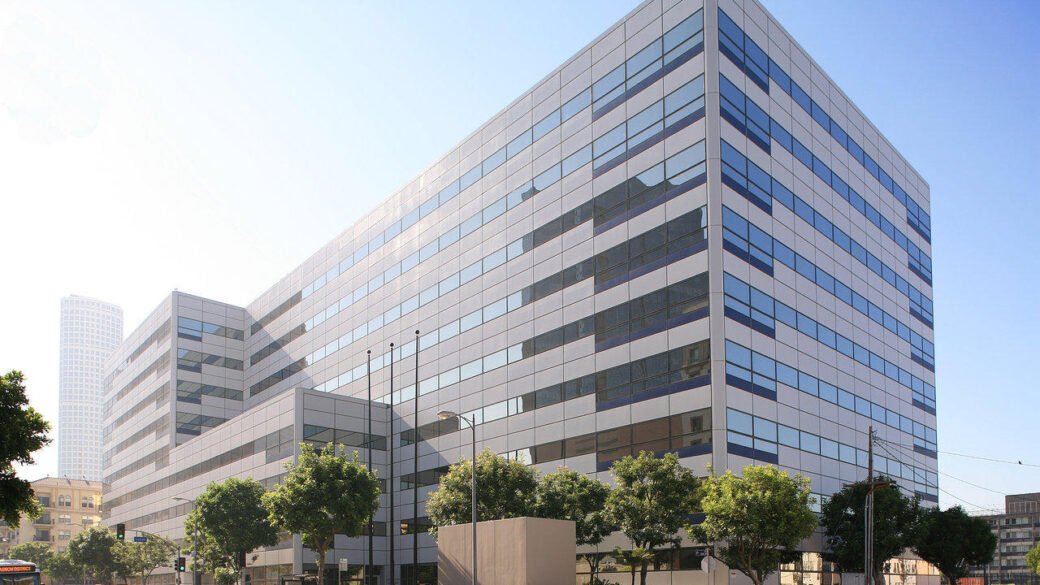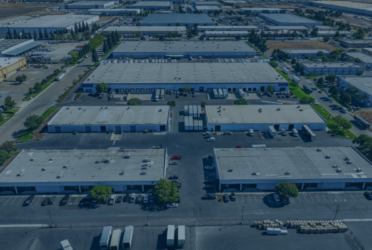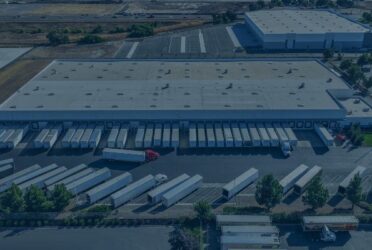The Ultimate Guide to Investing in Data Centers

1 The Ultimate Guide to Investing in Data Centers
1.3 What Makes a Data Center Location Attractive?
1.4 What Level of Security Do Data Centers Impose?
1.5 Where Are Data Centers Located?
1.6 Why Do Data Centers Cluster In A Few Geographic Areas?
1.7 How Do Local Utility Costs Affect The Economics Of Data Centers?
1.8 Are Data Centers Real Estate Or Infrastructure?
1.9 How Are The Various Tenants Inside A Data Center Arranged And Organized?
1.11 What Are The Barriers To Entry To Data Center Development?
1.12 Is It Possible To Retrofit A Building Into A Data Center?
1.13 How Are Data Center Leases Structured?
1.14 Are These Net Or Gross Leases
1.15 How Can I Research Data Center Opportunities?
1.16 Where Do I Find Reports About Data Center Real Estate?
1.17 Where Do I Find News About Data Center Real Estate?
1.18 What Are The Most Prominent Data Center Real Estate Stocks Or REITs?
1.19 What Kind Of Returns Can Data Center Investors Expect?
1.20 How Are Sustainability Concerns Affecting Data Centers?
Data centers function as the little-noticed plumbing of the tech world. Any time you shop online, stream a movie, participate in a video meeting, check social media or make an electronic payment, you are relying on bandwidth and server capacity hosted in a data center. Read on for more about this emerging sector and how to play it.
A data center is a highly specialized facility that houses servers, storage devices, switches, routers and fiber optic transmission equipment. To compare a data center to a more familiar property type, you might think of it as a warehouse for computer servers. Like warehouses, data centers are designed to be highly functional but not visually appealing. These structures are boxy and non-descript — there are no starchitects in this sector. Another way to think of data center: Imagine an office building built for computers rather than for workers. Because data centers operate with very few human workers minding the store, data centers don’t need restrooms, parking garages or ping pong tables.
But data centers do need plenty of electric power – a power source is probably the top requirement for this type of real estate. A supply of electricity is crucial not just because all the computers run on power but because data centers also generate a huge need for cooling. Data centers pack thousands of high-powered computers into one large room, and each computer generates heat. So data centers are designed with numerous large air conditioners scattered throughout the facility. And they typically include large chillers that help meet their outsized needs for cooling.
Just about any company that stores data and uses the Internet can be a tenant of a data center. Data centers break down their tenants into the broad categories of cloud providers, networks and enterprises. The enterprise category includes all manner of businesses, including financial, health care, education, government and professional services users.
Digital Realty Trust, a data center REIT, says in an SEC filing that its largest tenants include IBM, Facebook, Oracle and LinkedIn, along with JPMorgan Chase, At&T, Verizon and Comcast. Data center landlords can be quite secretive about who their tenants are. Digital Realty Trust identifies some of its top customers by such vague descriptions as “Fortune 50 software company.” CoreSite, another data center REIT, is even cagier – its annual report doesn’t name names of its 10 largest tenants, instead identifying them just as cloud, enterprise or network users. Some of the largest users – such as Amazon, Microsoft, Google and Facebook — build their own data centers. They buy land, negotiate with the local utility provider and build a “hyperscale data center” so that they can control the entire operation.
What Makes a Data Center Location Attractive?
Commercial real estate is all about location, location, location. In the retail sector, a prime location is one near lots of people. In distribution, access to roads and rail lines is key. In the hotel sector, the best location might be near a theme park, casino, beach or ski slope. Data centers have developed their own calculus around what makes a compelling location. One is a supply of reliable and affordable power. The other is connectivity to Internet infrastructure.
Because of the high stakes involved in data centers, power redundancy is an important feature. Every data center has at least one source of backup power that kicks in if the local utility experiences an outage. Data centers rely on an uninterrupted power supply, also known as a UPS, and generators. If the power utility from the utility fails, the data center offers a seamless transition to generator backup power. Data centers offer varying levels of redundancy – and the more layers of redundancy a data center offers, the more attractive it becomes to tenants. Data center tenants are typically large organizations operating in competitive sectors, and they demand zero downtime for their digital operations.
Connectivity is another major selling point for data centers. For example, Netflix, doesn’t host its entire inventory of movies in one data center in the middle of the country. Instead, it disperses its storage so that virtual movies are hosted near the end users. This need to store data physically close to population centers has led to the rise of something called carrier hotels. These are data center hubs in big cities. In Los Angeles and New York City, for instance, the data center hotels look like unattractive office buildings from the outside. But these are hugely valuable locations where Internet service providers come together in one building and link up so they can move data amongst one another. The Los Angeles facility, One Wilshire, is in the heart of downtown. The Manhattan carrier hotel is at 60 Hudson Street, in the Tribeca district.
What Level of Security Do Data Centers Impose?
Data centers are much more secure than standard office buildings. The security goes well beyond standard key cards. Data centers often have full-time staffs of a dozen or more security guards. Some tenants with sensitive data use “man traps” where anyone who enters a secure room must leave a phone in a locker before entering. Some centers have cages made of chain-link fences that separate different clients’ servers within the data center.
Where Are Data Centers Located?
While offices, shopping centers and warehouses are everywhere, that’s not the case with data centers. Commercial real estate brokerage CBRE says there are just seven “primary” data center markets in the U.S. Northern Virginia leads the way with 1,504 megawatts of capacity as of mid-2021. (The size of a data center typically is expressed in power capacity rather than square footage.) The other six major markets are Dallas-Fort Worth (367 megawatts), Chicago (304 megawatts), Silicon Valley (303 megawatts), Phoenix (268 megawatts), Atlanta (178 megawatts) and the New York tri-state region (161 megawatts). “Secondary” markets for data centers include Central Washington state, the Austin-San Antonio region and Seattle, CBRE says. As the sector grows, emerging markets are making some headway, too.
Northern Virginia has embraced the moniker “Data Center Alley.” Loudon County in Northern Virginia bills itself as the world’s largest concentration of data centers, with 25 million square feet built and 4 million square feet of additional space under construction as of early 2022. However, there’s plenty of emerging competition from other areas that hope to attract data centers. Many states – including Alabama, Arizona, Michigan, Minnesota, North Carolina and Ohio – offer tax incentives and other subsidies in hopes of luring data center dollars.
Outside the U.S., the data center market is changing rapidly, Cushman & Wakefield reports. Many of the hyperscale data centers that dominate cloud, network and Internet services can enter a new or relatively immature market and simply begin a major build. This shift has led to rapid increases in data centers in Southeast Asia, South America and sub-Saharan Africa. By contrast, Singapore and Amsterdam are locations with deep data center capabilities, but both have halted development of new data centers in recent years. Each is only allowing previously approved projects or small-phased buildouts to go forward.
Why Do Data Centers Cluster In A Few Geographic Areas?
Once a data center hub is entrenched, it tends to create its own gravitational pull. Data center tenants want to be near other data center tenants. And the main hubs also boast high levels of connectivity. The calculus is straightforward: It’s far easier to run a fiber optic cable across the street or across town than to run a connection across the state or country. High-frequency trading companies and hedge funds illustrate this point: In an attempt to shave microseconds from their execution times, these financial players set up their servers as close to the New York Stock Exchange servers as possible (a phenomenon described in Flash Boys, the bestselling book by Michael Lewis). In the data center world, physical space can be just as important as virtual space. Physical proximity matters, and the clustering effect creates a self-perpetuating ecosystem of data centers.
A low risk of natural disasters can be a selling point, although remote areas with little weather risk have the downside of a lack of connectivity. Weather risk is one consideration – areas prone to hurricanes, earthquakes and tornadoes are less desirable. Of course, weather risk is everywhere, and two of the biggest data center hubs are prone to natural disasters. Dallas-Fort Worth is in Tornado Alley, and Silicon Valley is vulnerable to earthquakes. So data center users balance the risk of natural disaster with the need to be near connectivity points.
How Do Local Utility Costs Affect The Economics Of Data Centers?
Power costs vary widely by utility providers. One of the main expenses for a data data center tenant is electricity, so local power costs become a huge factor in location decisions. Some cities and power suppliers charge a relatively cheap cost of electricity. Other regions impose much higher power costs. Sometimes the costs vary from one block to the next. For example, the city of Los Angeles’ municipal power utility charges a higher rate for electricity than Southern California Edison. So data centers across the street from one another could be more or less attractive to tenants based on which utility provides the electricity and how much it costs. In Data Center Alley, Loudon County markets electricity prices that are 28% below the national average as one of the selling points in its marketing pitch to data center developers. Data centers use so much power that even small differences in electricity costs become a big consideration. From a landlord’s perspective, lower utility rates allow the data center to charge more in rent.
Are Data Centers Real Estate Or Infrastructure?
A little bit of both. The buildings themselves are real estate, but data centers function as an indispensable cog in the digital economy. At One Wilshire in Los Angeles, for instance, undersea cable connections from Asia connect to the data center. The data then is dispersed to Internet service providers. For data center users, finding a location near one of those hubs is key because proximity to a data hub allows the tenant’s data to travel quickly to consumers. A data center that offers access to a large number of carriers or Internet service providers experiences high tenant demand, because users have more options for contracting with carriers that can push their data out to consumers.
Because there is so much redundancy built into data networks, if one data center were to be taken out by weather or a terror attack, the Internet-using world wouldn’t notice. But a few key data centers, such as One Wilshire and 60 Hudson, are so important to the broader data network that if they were to suffer a disaster, disruptions would be noticeable. In a final note on the real estate vs. infrastructure question, it’s worth noting that the three exchange-traded funds that hold data center REITs also have portfolios filled with shares of owners of cellular communications towers, a niche known as “digital infrastructure.”
How Are The Various Tenants Inside A Data Center Arranged And Organized?
A multi-tenant data center typically has a “meeting room,” a space where each tenant has several fiber optic cables. Each carrier and each tenant has a presence here, usually one server rack per tenant or carrier. All the data flows to this one location within the building. From there, fiber optic cables physically connect tenants in the building. And then, the data is distributed to the global Internet network.
Colocation is concept that appeals to smaller data users who might not need their own lease in a data center. A group that will sign a direct master lease with a landlord, and then the colocation group sell individual servers or racks or cabinets to their clients. These groups act as wholesale data center providers to local law firms or medical practices. A data center landlord might not want to negotiate a number of small users. So the data center owner signs a large lease with a colocation provider, and that group parcels out smaller sections of the data center.
What Are The Barriers To Entry To Data Center Development?
Developing a data center is a complicated undertaking, one that requires substantial investment and specialized knowledge. For starters, a developer must find a suitable parcel of land, one in a strategic location with no shortage of competition from other data center operators. After land acquisition, the developer’s to-do list includes such tasks as securing entitlements, applying for permits and setting up utilities. Environmental impact studies and other regulatory hurdles can slow the development timeline. Once the land is acquired and approvals are secured, the next list of challenges involves constructing the data center. Building a data center poses a number of architectural and engineering challenges. Wiring and cooling systems must be robust enough to handle the unique needs of data centers. The floors must be designed to support racks of servers. The power system must include at least one layer of redundancy, possibly more. And given data centers’ reputation as energy hogs, some developers are looking to add energy efficiency and sustainability features.
Is It Possible To Retrofit A Building Into A Data Center?
Yes, it’s possible. Is it ideal? No. There are some older buildings that have been repurposed from offices into data centers. This setup up is common in downtown Los Angeles. However, older officee buildings were not designed to be data centers. Some of these buildings date to the 1920s, and office users then didn’t need as much power as a modern data center. These facilities tend to have low ceilings and makeshift arrangements such as generators installed on a floor. Floor-loading issues are another challenge. Many data centers are designed with raised floors. This makes it easier to run cool air under the floors and into the server rooms. That feature makes room ceiling heights important – chilled water pipes take up space and cabling and wiring also takes up space.
Fire suppression is another factor. Sprinklers are a no-no in data centers. The last thing tenants want is water spraying on their valuable computers. Powder-based fire suppression also is a problem – the material would contaminate servers. So data centers use gas fire suppression systems. The data center will set aside a room with tanks of heavy gas. The gas is dense, and when it’s released, it pushes out all the oxygen and suppresses the fire, but it doesn’t destroy tenants’ computer equipment.
How Are Data Center Leases Structured?
Data center tenants like long leases, because they amortize the costs of their buildout over a period of 10 years or longer. No data center tenant will sign a two-year lease because they don’t want the landlord to be able to kick them out after two years — when they just dropped hundreds of dollars per square foot into their space. Compared to office space, which might cost $50 to $100 per square foot, data center space is very expensive – generally hundreds of dollars per square foot. The precise price per square foot depends on on the usage of the space. Amazon, for instance, might make have use of data processing, while telecom providers are more focused on connectivity.
How the cost is split between landlord and tenant is very much a subject of negotiation. The landlord generally provides power and water to the space. The landlord is responsible for providing the basics, and then the tenant buys server racks and computers, pays for the wiring within the tenant’s suite, and buys an air handling unit. Data centers often provide a tenant improvement allowance of perhaps $50 per square foot, to help the user build out their space.
Are These Net Or Gross Leases?
Leases typically are structured as triple net contracts, but at the very least the electricity is a net cost to the tenant. Tenants directly pay their own electricity costs. The landlord knows exactly how much power each tenant uses and bills them at the end of the month. Other occupancy expenses are minor compared to electricity. Sometimes landlords and tenants will negotiate leases that are full-service gross leases for the other expenses.
How Can I Research Data Center Opportunities?
It is very difficult to get accurate, timely information about data centers. In mature markets such as Northern Virginia and Silicon Valley, comprehensive information is readily available. In smaller data center markets such as Los Angeles, investors have to do their own research. Unearthing useful information requires getting on the phone with data center brokers in the market and asking questions. What’s the asking rate? What is the structure for common-area maintenance charges, for utility charges, for room fees?
Where Do I Find Reports About Data Center Real Estate?
All of the major brokerage houses – including CBRE, Cushman & Wakefield and JLL — have teams of specialists focusing on data centers, and they put out free materials as a marketing tool. CBRE’s page is here, Cushman’s is here and you can find JLL’s data center hub here. The big brokers use this free research to attract clients. One caveat is that market information about data center markets is not as clean and standardized as data for longer-established sectors, such as office, multifamily and industrial. Because the sector is new, the data isn’t always transparent. Some of the leases are structured as purchases of power, so tenants lease, for instance, a megawatt of capacity. But that quirk makes it really hard to compare lease rates from one tenant to another.
Where Do I Find News About Data Center Real Estate?
Kristina Metzger of CBRE Data Center Capital Markets puts out a Friday LinkedIn blast that offers a national roundup of what’s happening in the data center market. Another news source is Data Center Frontier, a website that covers the industry. Local newspapers and business journals cover data center deals in their geographic areas.
What Are The Most Prominent Data Center Real Estate Stocks Or REITs?
If you’re looking for an easy, direct and high-liquidity way to invest in data centers, several publicly traded real estate investment trusts fit the bill. These are the largest U.S.-based data center REITs by market capitalization as of Jan. 31, 2022:
Equinix (Nasdaq: EQIX) had a market cap of $64 billion and a yield of 1.62%. The company is headquartered in Redwood City, California. As of Dec. 31, 2020, Equinix owned 224 data center buildings worldwide.
Digital Realty Trust (NYSE: DLR) had a market cap of $42 billion as of Jan. 31, 2022, and a yield of 3.19%. The company is based in Austin, Texas. As of Sept. 30, 2021, Digital Realty Trust owned 282 data center buildings encompassing 35 million rentable square feet. It reported an occupancy rate of 84%.
Iron Mountain (NYSE: IRM) had a market cap of $13 billion and a yield of 5.5%. This Boston-based company isn’t solely a data center operator. It also stores paper records and offers shredding services.
CyrusOne (Nasdaq: CONE) had a market cap of $12 billion and a yield of 2.32%. The company is headquartered in Dallas.
QTS Realty Trust (NYSE: QTS) had a market cap of $6 billion and a yield of 2.56% before it was taken private by Blackstone Group in January 2022. The REIT is headquartered in Overland Park, Kansas. Another publicly traded REIT, CoreSite Realty, was acquired in 2021 by American Tower.
What Kind Of Returns Can Data Center Investors Expect?
The answer depends on the amount of risk you take. The hyperscale data centers offer very reliable returns, but the numbers won’t be sexy. Buying a fully leased Amazon Data Center, for example, won’t generate big returns. You’ll reap small, steady rewards from making a bet with very little risk. At the opposite end of the risk spectrum, big returns are available on deals that involve more risk. These deals require some capital, and the involvement of a lender who understands the economics of data centers. By repositioning a struggling property or building a data center from scratch, an investor can cash in big returns. These principles are no different from any other type of commercial real estate.
How Are Sustainability Concerns Affecting Data Centers?
Sustainability is a hot issue in corporate boardrooms, and the data center sector is under pressure to use more efficient systems, renewable energy and carbon-cutting practices. In JLL’s latest Sustainable Real Estate survey of 550 corporate real estate leaders, 70% are willing to pay a rental premium to lease green buildings in the future, and 83% of occupiers and 78% of investors understand that climate change imposes a financial risk to their business. While users are particularly focused on their office spaces, they also want sustainability from data centers, which consume large quantities of power and water. In a recent survey of 825 Multi-Tenant Data Center operators by S&P, more than 40% said they have a strategic sustainability initiative in place to improve their data center builds and operations.
What Does 5G Mean For Data Centers?
The rise of 5G mobile service will reshape the way that data is stored and sent. The next generation of data centers are known as “edge data centers.” This new breed of data center is small enough to be housed in a retail location or health-care center. The notion is to take the data close to the consumers. These data centers are likely to be automated. While traditional data centers are managed by human workers, edge data centers are unmanned and remotely managed.
To learn more about how you can also invest in this little known but stable and recession resilient asset class, contact us today.










 Podcast
Podcast